One of the most frequently misunderstood garments in a kimono wardrobe is the nagajuban (長襦袢, long juban, also referred to as nagajyuban, or sometimes simply juban). They are often so lovely and well-decorated that people might mistake them for proper kimono, which can be embarrassing and incorrect. It’s not uncommon to see attendees at anime conventions flaunting their “amazing kawaii new kimono” actually running around in these in-between garments. I have seen them worn as over-jackets (Angel Adoree does this quite often), and with proper styling choices this can be a fun look, but if you’re aiming for accuracy it’s quite awkward to be caught out and about in one with nothing over it.
They’re not quite “underwear” as we’d think of them in Western terms. When wearing a kimono, you typically start with either a kimono bra (that helps to flatten and smooth the bust line) and comfortable panties or a traditional wrapping cloth known as sarashi. On top of that layer, there is another fairly plain layer known as hadajuban (肌襦袢), though I admit – in very hot or muggy weather I often forgo the hadajuban and just wear my nagajuban over my bra and shorts. The nagajuban goes over these layers, but they are not proper outer garments either. They’re meant to be seen in very minute amounts – at the collar, at the sleeve edges, and occasionally at the hem while walking. Anything more would be kind of indecent. They also add shape and structure to the kimono, to help achieve that ideal columnar figure. Between these layers, there are often towels or small pads used to help smooth out the body line. It always gives me a good chuckle when people imagine a woman undressing and simply slipping the kimono off her shoulders and being essentially naked underneath. The reality is far less sexy, and is illustrated spectacularly in this comic by @nyorozo on Twitter. Fantasy on the left, reality on the right!
There are a few giveaways that can help you differentiate between a kimono and a juban. Kimono for women are meant to be worn with an ohashori (fold at the waist) and so are typically quite long. Nagajuban are typically much shorter, since they’re not meant to be folded. They also often have a white or contrasting collar over which a decorative haneri can be attached. Lastly, they also tend to be more narrow, without the diagonal okumi panel attached between the front and collar pieces.
There is also a variant called hanjuban (半襦袢, half juban) that is much shorter, and typically paired with a wrap-style skirt know as susoyoke (裾除け). These are easier to adjust to your height, tend to be much more convenient to wear. Many modern ones are available in a combination of breathable cotton and washable polyester. Together, they are sometimes referred to as nibushiki (separated) nagajuban.
Vintage undergarments were often red or other vivid colours, back when kimono in general were much bolder and more vibrant, and people wore them more often and could justify getting ones that coordinated with specific kimono. Naomi no Kimono Asobi has a lot of very amazing examples of brightly-coloured vintage undergarments. These bold patterns an vivid reds are also a throwback to the sumptuary laws of the Tokugawa shogunate, which prevented the merchant class from wearing fabrics that were showier than the samurai and aristocrats. To get around this, they would often hide flashy designs and bright colours on their undergarments, a trend which continued on even long after the sumptuary laws were rendered defunct.
Nowadays, nagajuban tend to be white or pale pastels, since those are much more neutral and versatile. When you don’t wear kimono every day it’s not really worthwhile to invest in a large collection of undergarments; it makes much more sense to buy one or two that you can wear with everything.
That being said, my collection is a combination of versatile modern pieces, vibrant vintage nagajuban, and a few home-made or modified items. Because I’m so tall, I often have to rely on the two-piece variants and even then sometimes have to lengthen the skirt portion. If it’s cool enough, I might also wear a full juban with susuyoke, but that can begin to get quite thick around my already not-insubstantial waistline. Another handy aspect of a two-piece is that if you’ve got broader hips and the front hem of your kimono flaps open sometimes, you can tie the susuyoke so the split is in the back. This way if your kimono hem spreads too wide, you’re assured of the under-skirt keeping you decent.
- Vintage Vermillion
- Vintage with Pastel
- Faux-Shibori
- Handmade Furisode Two-Piece
- Modern Yellow Two-Piece
- Muslin with Shrimp
- Modern Furisode
- Sweet Floral
- Pastel Bokashi
Hopefully this will help alleviate some of the confusion about what these garments are and how they’re traditionally worn!

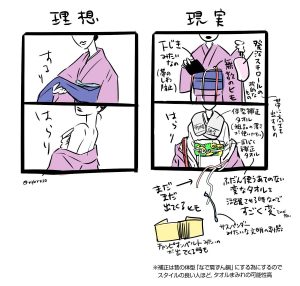
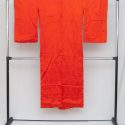
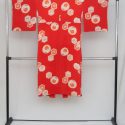
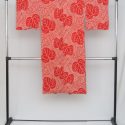
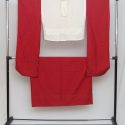
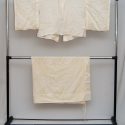
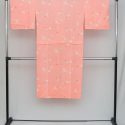
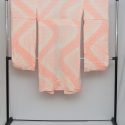
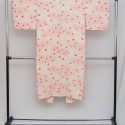
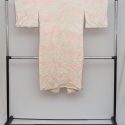











 Bebe Taian
Bebe Taian CHOKO Blog
CHOKO Blog Gion Kobu
Gion Kobu